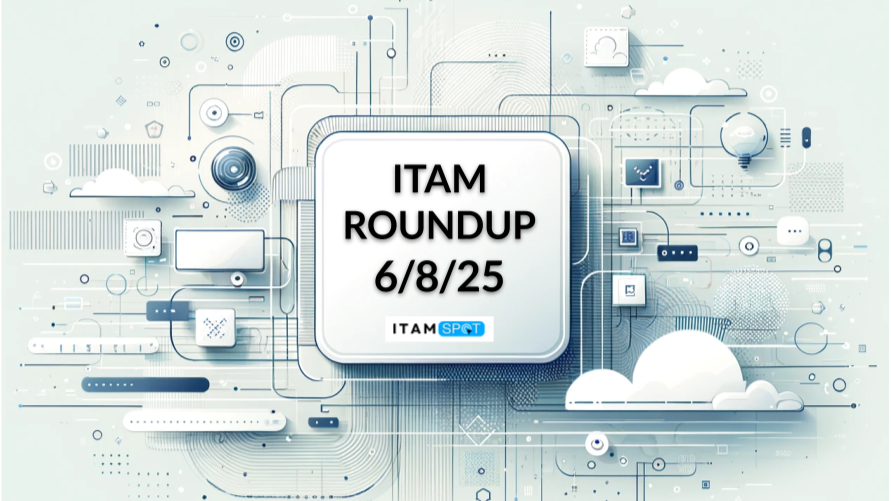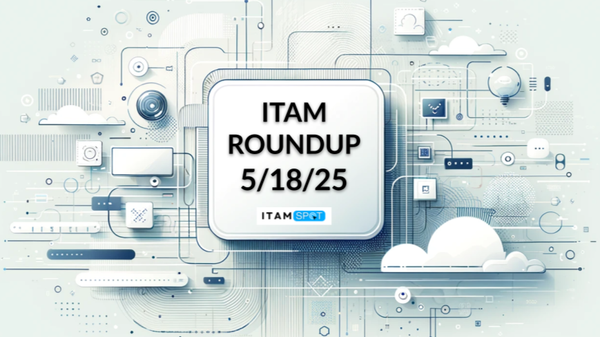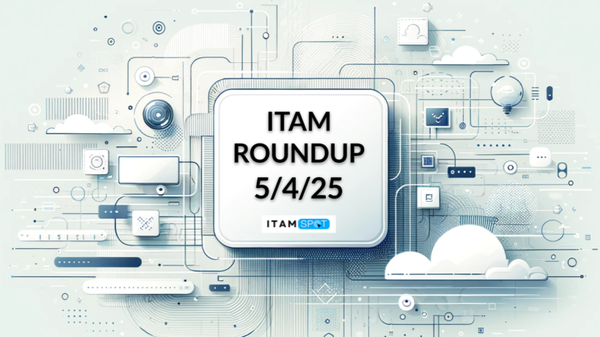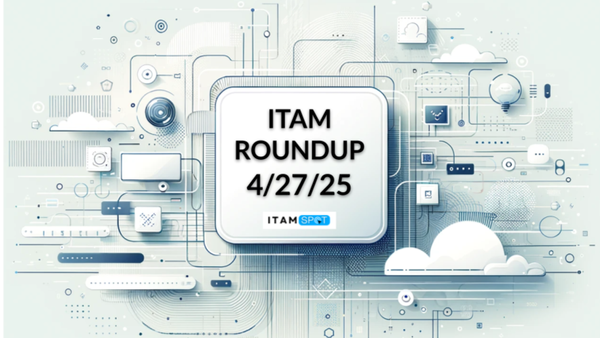ITAM Roundup: 6/8/25
📰 News
What’s new at Flexera: May 2025
Flexera's May 2025 updates include the introduction of AI-based invoice and purchase data ingestion for Flexera One ITAM, enabling automated processing of purchase documents and reducing manual entry. ITAM now supports Nutanix AHV VM inventory collection and real-time asset updates via Snow Atlas write APIs, enhancing automation and integration capabilities. In FinOps, Flexera added a Google Cloud dashboard for tracking CUD/SUD optimization in Eco and launched automated Kubernetes rightsizing in Spot Ocean with customizable rules and savings visibility.

Visual Studio and Team Foundation Server End of Life
Microsoft Visual Studio 2022 version 17.8 (LTSC Channel) will reach end-of-life on July 8, 2025, prompting organizations to update their installations to avoid security risks. Visual Studio and Team Foundation Server (TFS), now Azure DevOps Server, have long served as critical tools for software development and team collaboration, governed by Microsoft's 10-year fixed lifecycle policy. The end-of-life impacts only LTSC versions, emphasizing the importance of version and channel management in maintaining supported, secure development environments.

W24 SAM & ITAM Jobs | #ITAMjobs
The June 6, 2025 update highlights a wide range of global career opportunities in Software Asset Management (SAM) and IT Asset Management (ITAM), with roles spanning consultancy, compliance, and leadership. Positions are available at major firms such as Deloitte, KPMG, EY, Capgemini, and Snowflake, across locations including the UK, USA, Canada, Malaysia, and Australia. Salaries vary, with some senior roles—like Snowflake’s Senior ITAM Manager—offering up to \$221,500 annually, while many listings remain undisclosed.
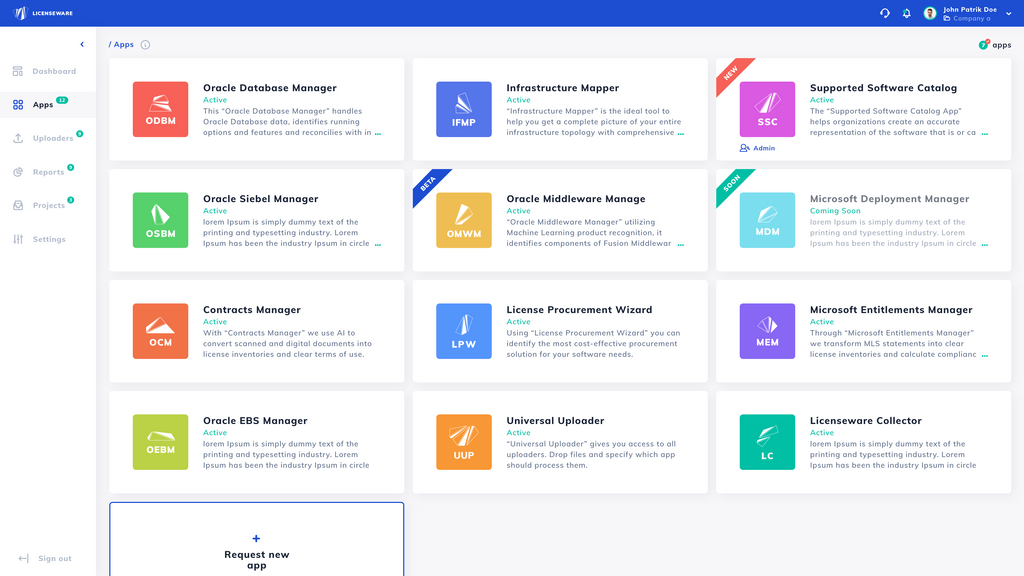
📖 Tips
Effectively Managing VMware/Broadcom Concerns & Risks with House of Brick & Opscompass
House of Brick and Opscompass are addressing rising customer concerns following Broadcom’s acquisition of VMware, particularly around increased licensing costs and perceived customer neglect. Their combined services and software offer compliance monitoring and risk mitigation tools to help clients manage elevated costs and maintain optimal platform performance. Key issues include drastic price hikes due to the shift to subscription-based licensing, which disproportionately impact small and medium-sized businesses and have led to widespread customer dissatisfaction.

Salesforce Licensing Guide
Salesforce offers a complex licensing structure consisting of user, feature, and permission set licenses that determine access levels and platform capabilities, making license selection critical for cost efficiency and operational alignment. Each license type—such as Standard User, Experience Cloud, or Service Cloud—defines access to specific CRM features, with provisioning occurring during purchases, upgrades, or patch releases. Understanding and strategically managing these licenses ensures businesses can optimize Salesforce usage while maintaining compliance and controlling costs.

Microsoft Licensing Update June 2025 incl. D365, SQL Server, Dragon Copilot and more
Microsoft's June 2025 licensing update includes critical changes to Dynamics 365 Finance and Operations, where license enforcement begins November 1, requiring users to be assigned licenses or lose access. SQL Server 2025 enters public preview with built-in AI features like vector search and integration with Azure OpenAI, while retaining its current licensing model. Additionally, Microsoft is retiring Project for the web in August 2025, merging its capabilities into Microsoft Planner for a unified work management experience without requiring user migration.

Microsoft SQL Server 2025 Licensing Guide
SQL Server 2025 introduces major advancements in AI integration, performance, and cloud connectivity, positioning it as Microsoft's most advanced enterprise database platform. Licensing options remain consistent, with core-based and Server + CAL models tailored to different deployment and user scenarios. Organizations must choose between five editions—Enterprise, Standard, Web, Express, and Developer—based on use case, scalability, and required features such as vector indexing, high availability, and virtualization support.

Microsoft Windows Server 2025 Licensing Guide
Windows Server 2025 is a cloud-ready OS offering advanced multi-layered security, hybrid cloud integration with Azure, and scalable infrastructure supporting demanding enterprise workloads. It is available in three editions—Datacenter, Standard, and Essentials—each tailored to different virtualization, scalability, and business size requirements, with licensing primarily based on core counts or virtual machines. The Datacenter edition provides unlimited virtualization rights for highly virtualized environments, while Standard supports limited virtualization, and Essentials targets small businesses with simplified licensing through OEM channels.
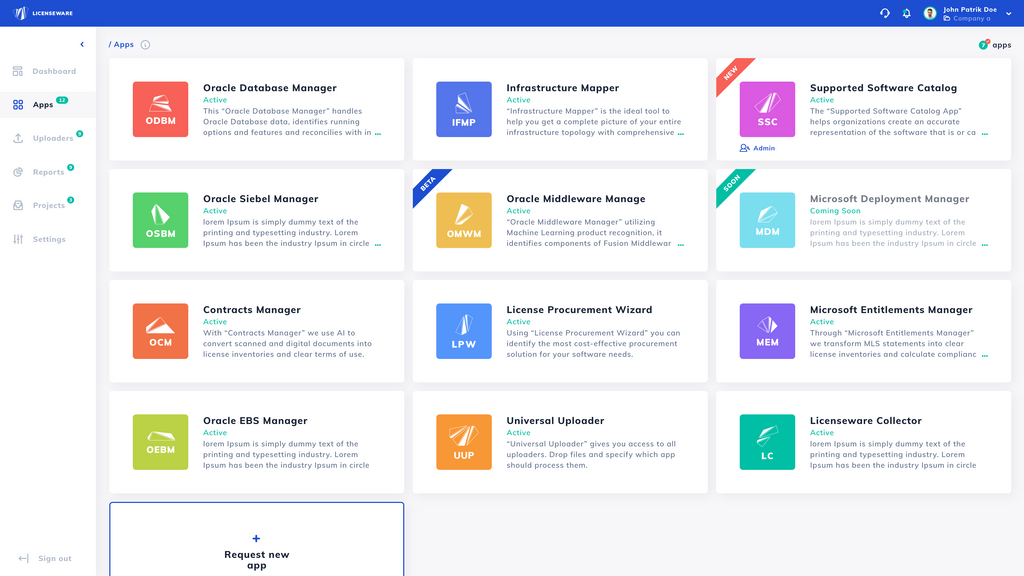
Microsoft System Center 2025 Licensing Guide
Microsoft System Center 2025 is a comprehensive datacenter management solution offering robust tools for monitoring, automation, and provisioning, with seamless Azure integration. It is available in two editions—Datacenter for highly virtualized environments with unlimited virtualization rights, and Standard for lightly virtualized or physical environments with limited virtualization rights—both licensed via a core-based model requiring all physical cores to be covered. Client management licenses provide flexible options based on user, device, or OSE licensing, enabling organizations to optimize costs based on their infrastructure and virtualization density.
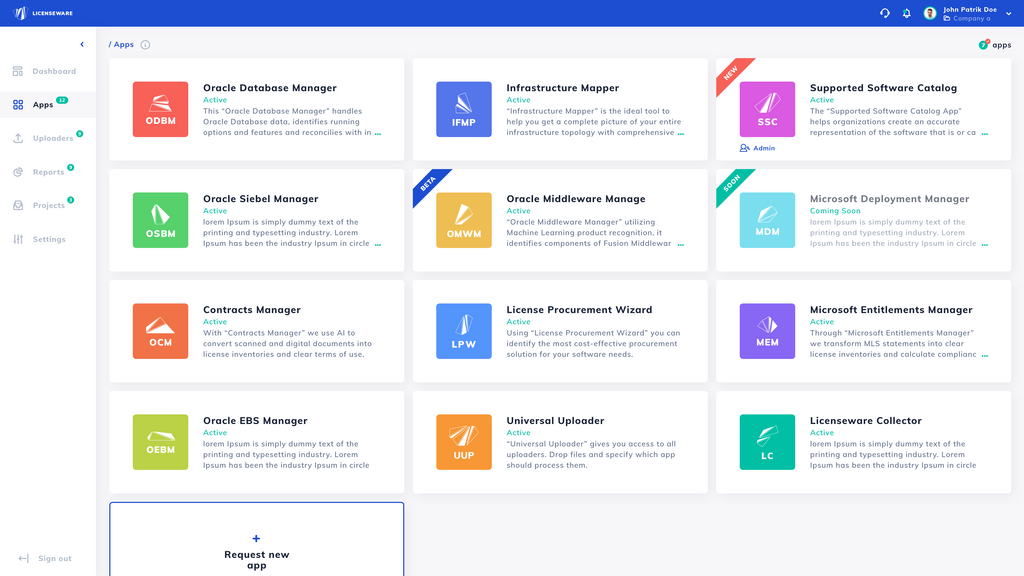
🐛Bugs & Exploits
Critical Fortinet flaws now exploited in Qilin ransomware attacks
The Qilin ransomware group, also known as Phantom Mantis, is exploiting critical Fortinet vulnerabilities—specifically CVE-2024-21762 and CVE-2024-55591—to bypass authentication and execute remote code on unpatched devices. These attacks, active since May 2025, are initially targeting Spanish-speaking countries but are expected to expand globally, affecting major organizations and healthcare providers. Fortinet flaws continue to be exploited by various threat actors, including state-sponsored groups, underscoring the urgency for organizations to patch vulnerable systems.


